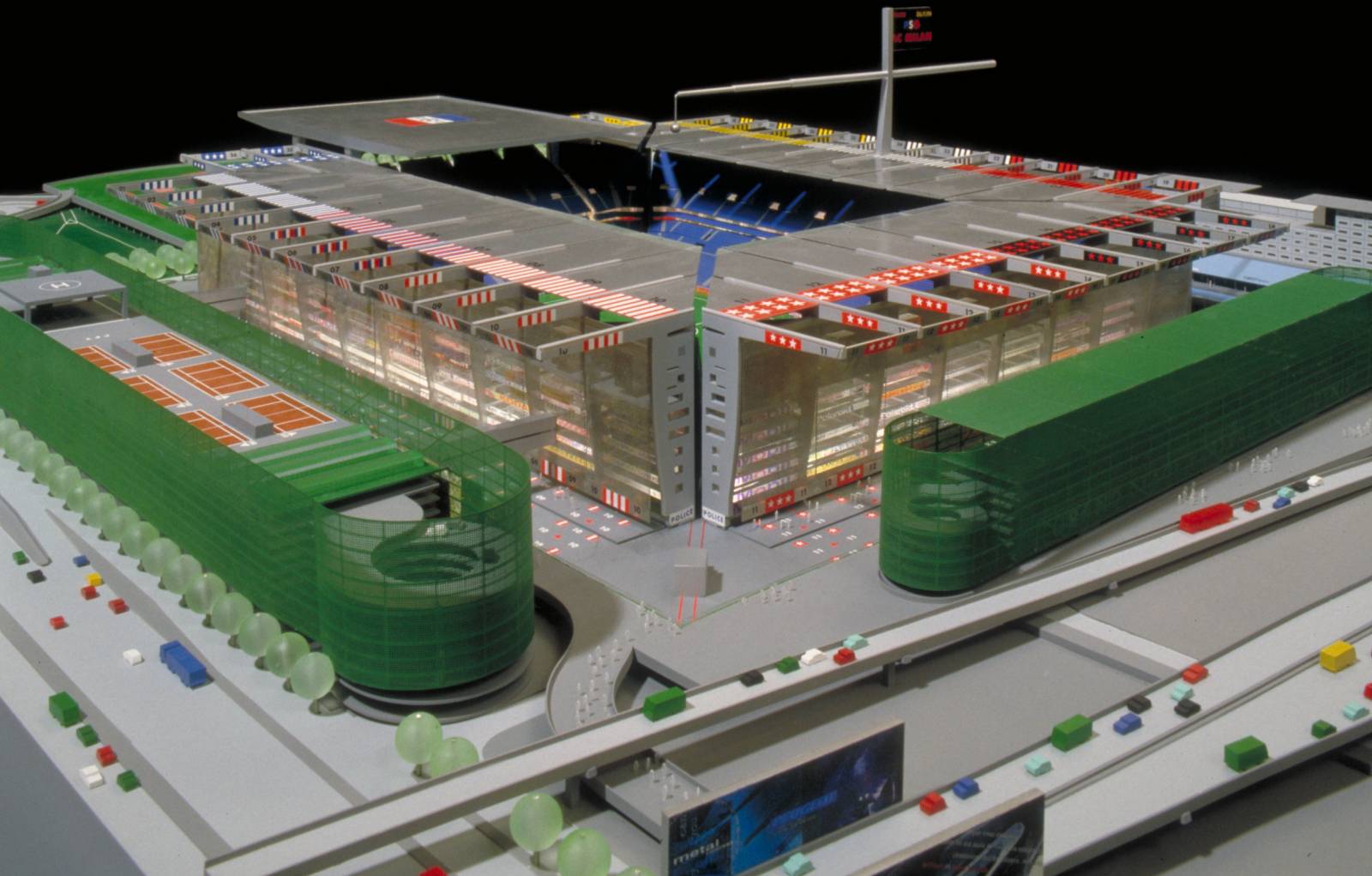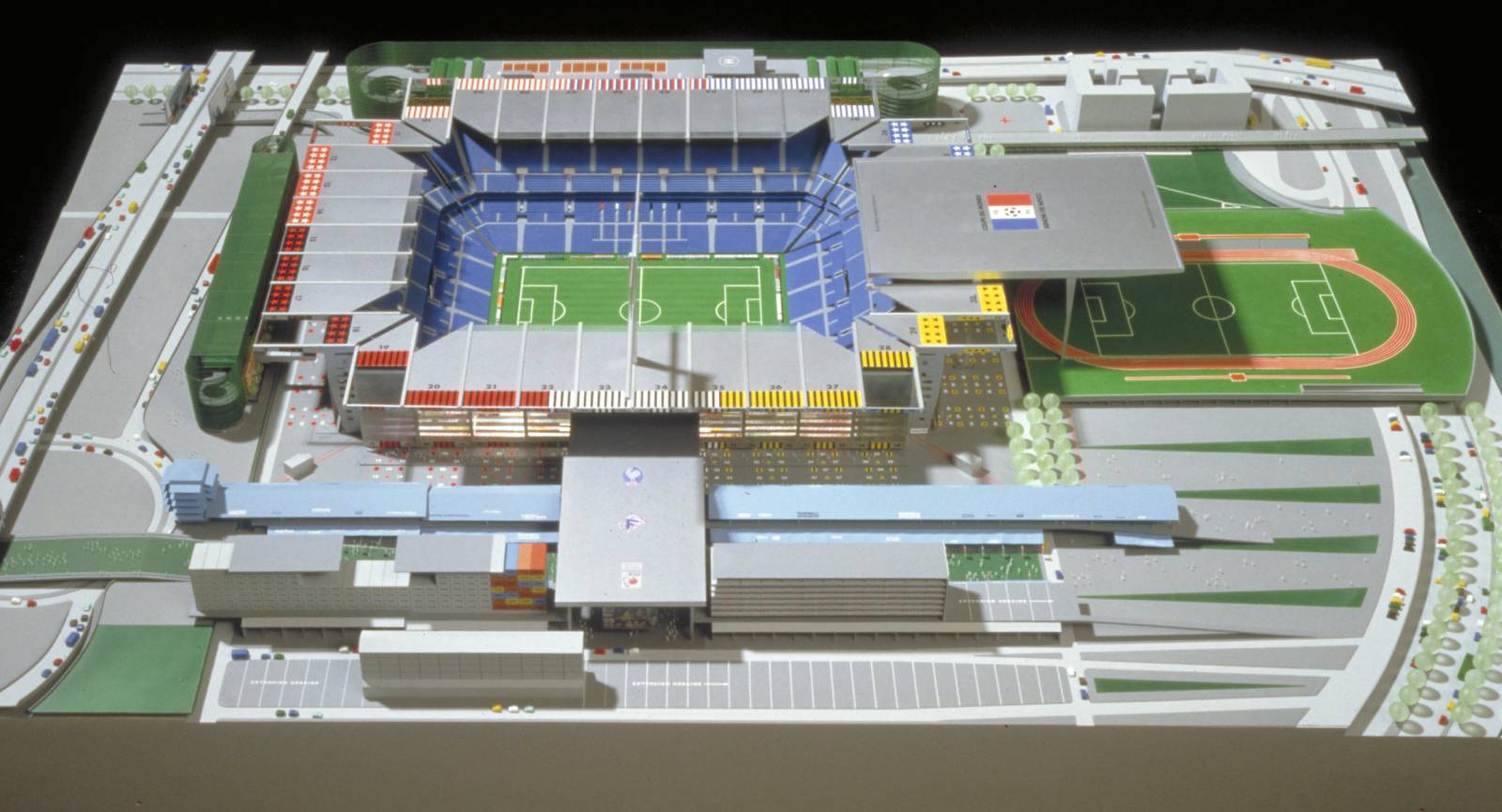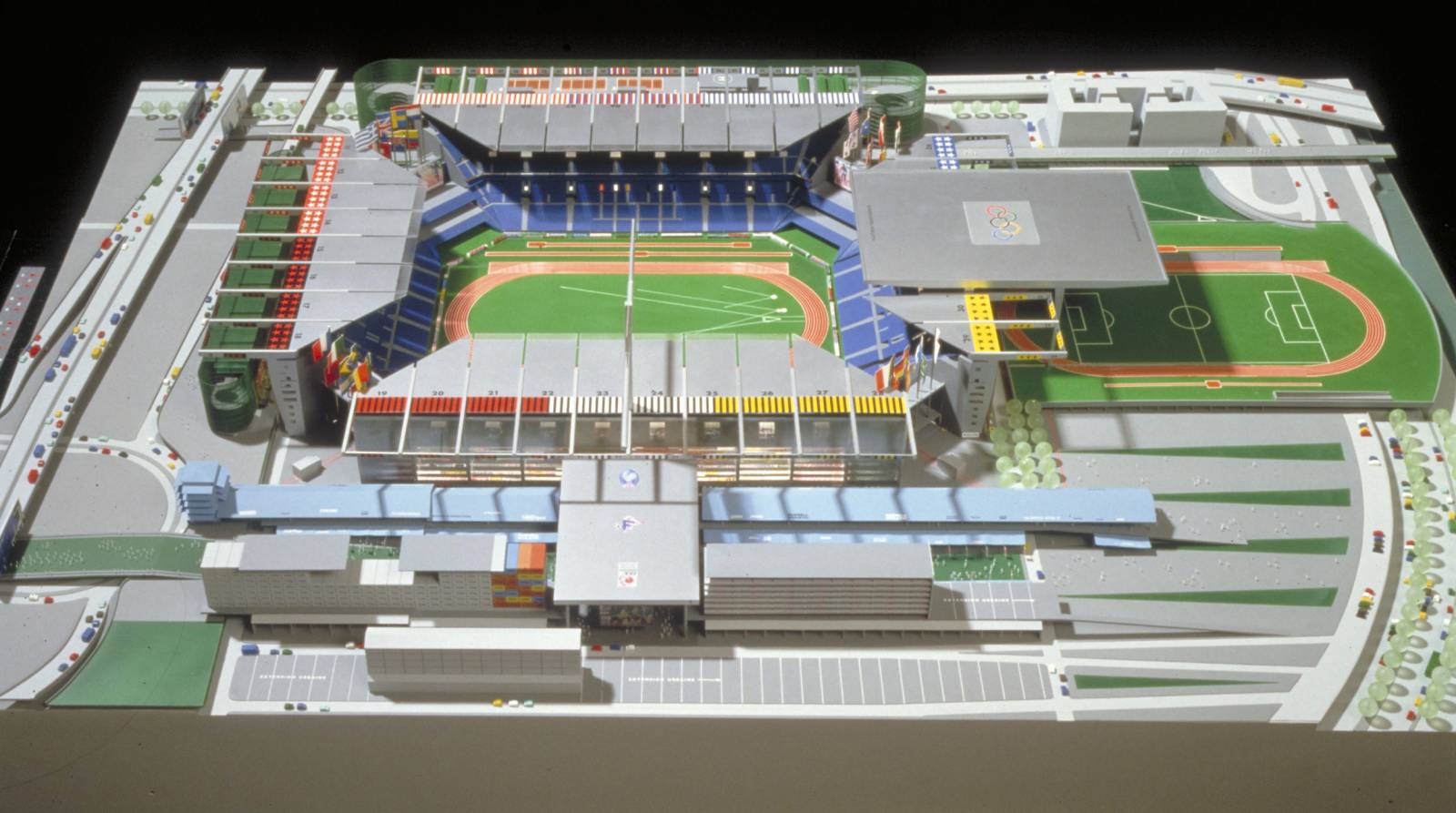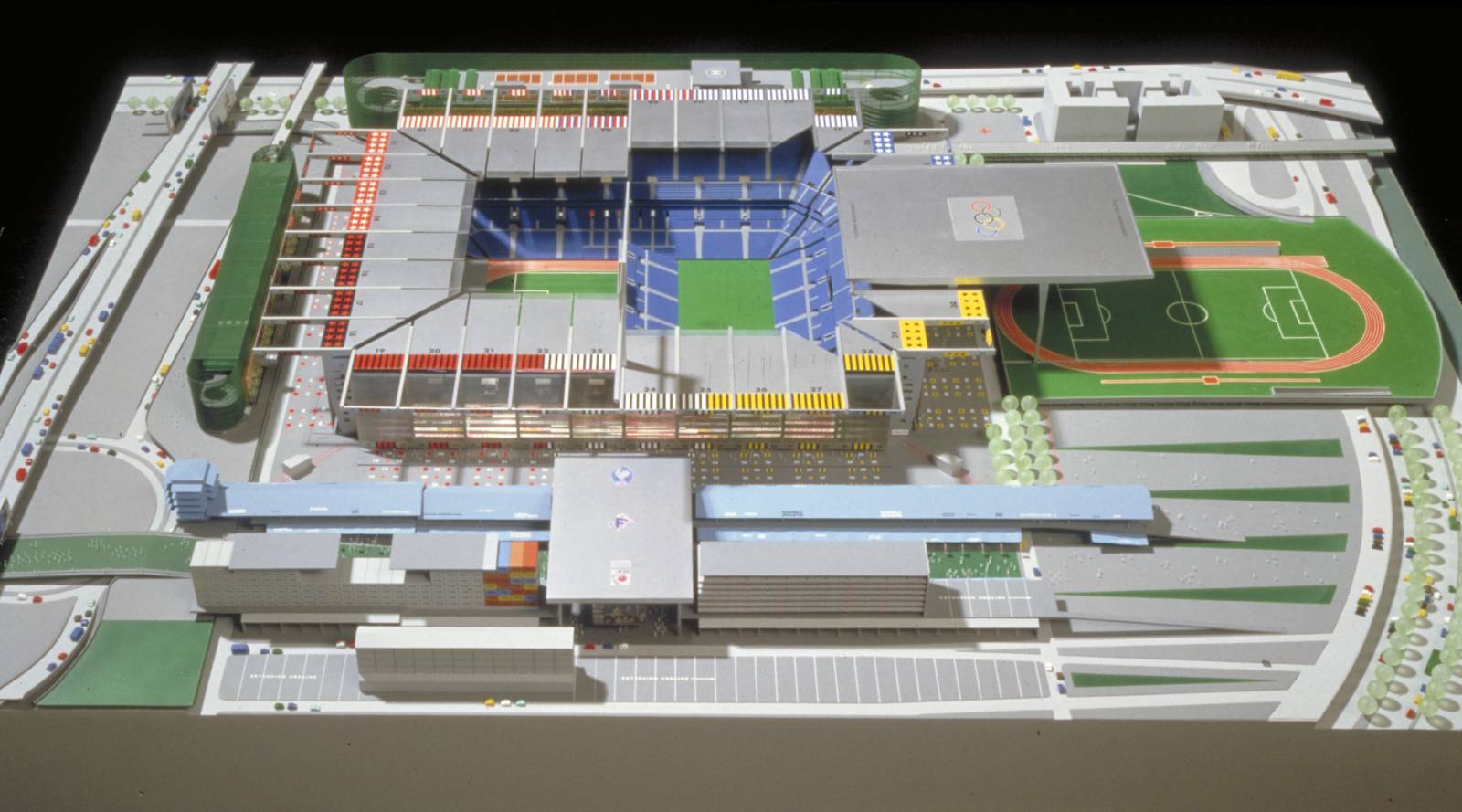Stade de France – “Grand Stade”
- Saint-Denis, France
An urban stadium
To urbanize thirty hectares on the outskirts of Paris is a symbolic act. In this case, it is a symbol that gives value back to misappropriated lands, which were formerly under the control of careless developers. Urbanity is not an old-fashioned value; it shall nevermore oppose modernity. To urbanize is to humanize. We have entered into the urban era, and accept the urban phase of the evolution within the course of history. Regarding the Stade, we are lead to the crucial question of its meaning as an enormous stadium in a city. In urban terms, a reference to an arena is appropriate. It is not simply about creating another stadium, but a festive and monumental structure that is attractive, enjoyable and welcoming. What characterizes an arena? First of all, its scale: an arena cannot be hidden or buried! It is the pride and joy of a city on which the organization of the neighborhood depends. Arenas function on rhythm and require in-depth analysis. The stadium itself is the first of its patrons.
I propose a radical solution that resolves the problem of the angle of view onto the playing fields and ensures optimal field lighting. The stadium is not partially modifiable – it is 100% flexible. A complementary flexibility is included: the sliding roof maximizes sunshine on the field and shades the stands in summertime. The underside of the grandstands is lined with retractable awnings that hang from the level of the stands. The stadium will be for between 25 and 80,000 spectators. The ensemble of the stadium is a symphony of blues, and in nuanced rhythms of the colors of the French national teams. Since it is inconceivable to design an Olympic stadium for only soccer, it is similarly inconceivable to design for the 65,000-seat Olympic minimum capacity. Imagine Paris being granted host of an Olympic Games with only the minimum qualification! The Olympic ceremonies are those which move the public most. Our Olympic stadium will contain 85,000 seats. Four large screens will be placed in the four angles of the stadium’s interior. These screens are vital to the enjoyment the game, showing a live broadcast. An urban Olympic stadium is a stadium that can host a large audience that will, from anywhere in the stands, have a clear view of the events. Installing four large screens goes in the way of history – and this is an Olympic record.
Jean Nouvel









